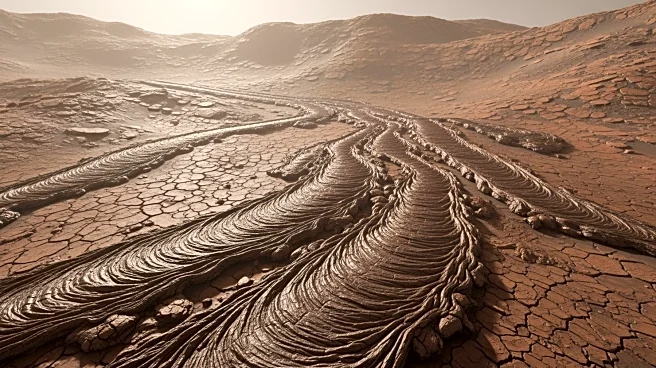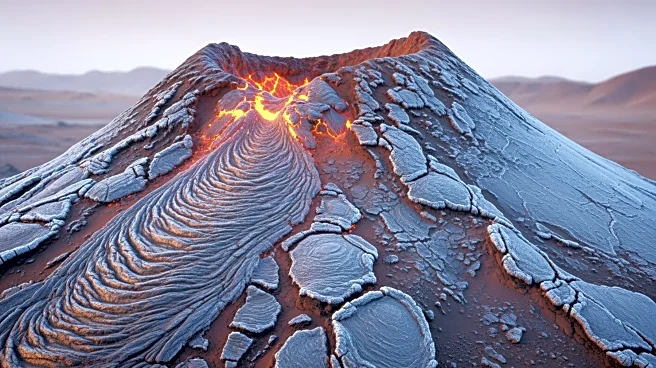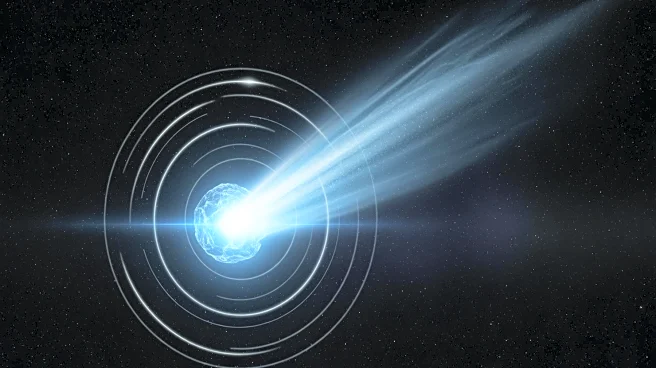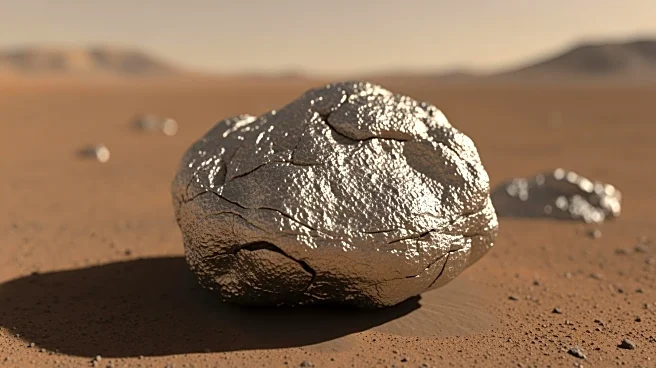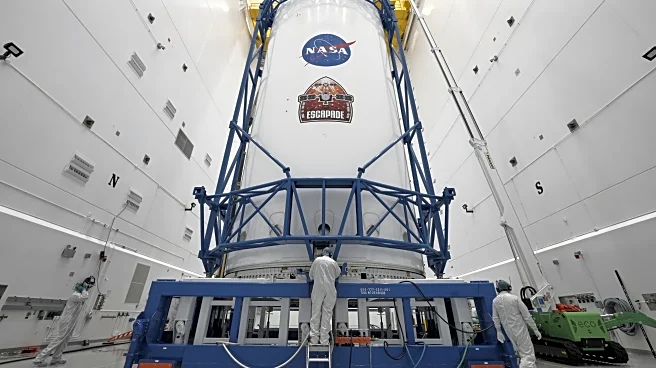What's Happening?
The European Space Agency (ESA) has released remarkable images of Olympus Mons, the largest volcano in the solar system, located on Mars. Standing at 27 kilometers high with a base over 600 kilometers wide,
Olympus Mons dwarfs any terrestrial volcano, including Mauna Kea on Earth. The images, shared on Instagram, depict frozen rivers of lava that once flowed down the volcano's slopes. Olympus Mons was initially discovered by NASA's Mariner 9 spacecraft in 1971, and subsequent missions have revealed its volcanic nature. The volcano is believed to have formed approximately 3.5 billion years ago during Mars' early geological period. Despite its size, Olympus Mons is considered dormant, with no recent eruptions. The images captured by the Mars Express orbiter show the volcano's southeast flank, featuring overlapping lava flows, steep cliffs, and traces of ancient collapse.
Why It's Important?
The release of these images by the ESA provides valuable insights into the geological history of Mars, offering clues about the planet's past volcanic activity and surface evolution. Understanding the formation and characteristics of Olympus Mons can help scientists learn more about Mars' geological processes and its potential for past habitability. The images also highlight the relatively young surface of the volcano, suggesting ongoing geological activity that could have implications for future exploration missions. The study of Mars' volcanoes is crucial for understanding the planet's climate history and assessing its potential for supporting life.
What's Next?
The ESA's continued exploration of Mars through missions like the Mars Express orbiter will likely yield further discoveries about the planet's geological features. Future missions may focus on analyzing the composition of the lava flows and investigating the potential presence of water in the lower plains, as hinted by the images. These efforts could contribute to a more comprehensive understanding of Mars' geological history and its potential for future human exploration. Additionally, the images may inspire new scientific inquiries into the relationship between volcanic activity and planetary magnetic fields, as suggested by social media reactions.
Beyond the Headlines
The images of Olympus Mons not only provide scientific data but also capture public imagination, as evidenced by social media reactions. The notion of running on Mars or building cities on its terraces reflects the broader cultural fascination with space exploration and the possibilities it presents. The study of Mars' volcanoes also raises ethical considerations regarding the preservation of extraterrestrial landscapes and the impact of human activities on other planets.
